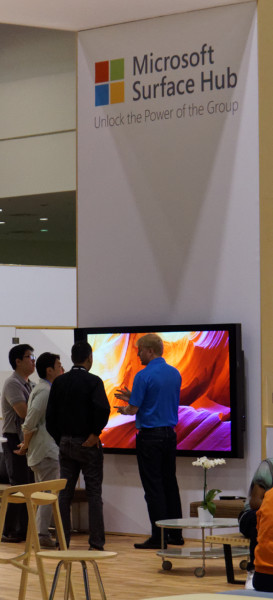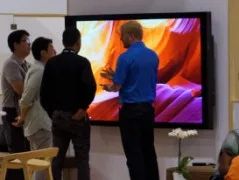
This week, I spent some time with Sharp in Malta and had a chance to see the Big Pad large interactive display close up and in a demonstration of how it can be used to share data and documents in meetings, so I had been thinking about interactive meeting displays (IMDs).
When I got back, I spotted the story about Smart Technologies and how it is looking for a next step. Smart is a leader in interactive displays and has been working hard to get away from whiteboards to become a display company. In the last few months, we have also seen education specialist, Promethean, is the subject of a takeover from a Chinese company after several years of losses.
So, the early specialists in this nascent market are finding things very tough, and I heard an analyst from another market research company say at the Sharp event this week, in so many words, “Nobody wants these interactive displays. Meetings are just Powerpoint and Excel. They just want to show their content”. On the one hand, I have some sympathy with this view – it’s very hard to change established human behaviour. However, saying that is like saying that people only want handsets to make phone calls. Apple changed the behaviour by delivering a compelling experience.
 Education has clearly discovered the value of interactivity. I’m fond of quoting “Bob’s Law”. This is based on an observation of mine many years ago that “Everyone that buys a computer always buys another”. I have heard of people that tried computing and then gave up, but I don’t think I’ve met one. In the same way, I haven’t heard of an educational organisation that tried interactive whiteboards and has since abandoned them (although I have heard of colleges that have added back regular whiteboards in addition to “SmartBoards” – my wife is a lecturer at a local college.)
Education has clearly discovered the value of interactivity. I’m fond of quoting “Bob’s Law”. This is based on an observation of mine many years ago that “Everyone that buys a computer always buys another”. I have heard of people that tried computing and then gave up, but I don’t think I’ve met one. In the same way, I haven’t heard of an educational organisation that tried interactive whiteboards and has since abandoned them (although I have heard of colleges that have added back regular whiteboards in addition to “SmartBoards” – my wife is a lecturer at a local college.)
It seems to me that the issue is really about the user experience and interface. If there is a learning curve (and my wife tells me that you really need training to use a SmartBoard), then in an educational environment where training and learning is fundamental, there is a chance for the technology. In corporate environments, it’s hard to imagine any success for systems that need real training. The experience and learning curve has to be as simple as the smartphone.
Not only that, it must be as easy and as obvious to the meeting participants as it is to the presenter if the technology is to make an impact. The BYOD devices need to be integrated if you want the real benefits of better collaboration and engagement.
That also seems to be understood by companies such as Smart and Microsoft, which as we reported from Infocomm (At Infocomm, Less is More), were emphasising simplicity and ease of use in their presentations. As we remarked at the time, the Surface Hub looks like one of the most usable of Microsoft’s products.
Anyway, it looks as though 2015 will really be an “inflexion point” in interactive displays, which have been showing strong growth in Europe over the last few years, although from a small base (if we exclude the Fatih project in Turkey, which it’s best to do). For a year or two, the market may be a little “too small for big companies, too big for small companies”, but the presence of Sharp and Microsoft certainly will help to move things along.
I’m heading off to Dubai for the Gitex/Infocomm MEA event in a few hours and I hope to catch up with some of the players in the market there to see how things have moved along since last year.
Bob

